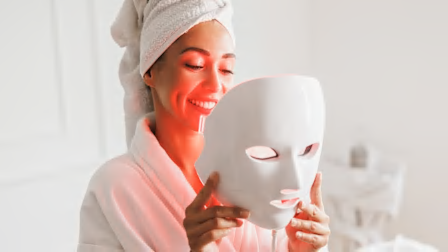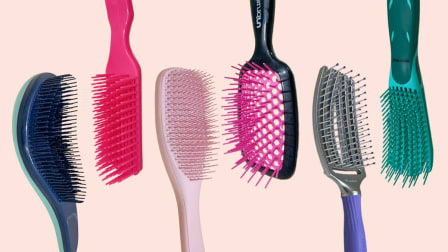What Exactly Is Dermaplaning, and Is It Safe?
Face shaving at home isn't all that cut and dry. Here's what to know about this trendy practice of removing the fine hairs on your face.
When you shop through retailer links on our site, we may earn affiliate commissions. 100% of the fees we collect are used to support our nonprofit mission. Learn more.

Alongside traditional disposable razors and trimmers meant for smaller or more delicate areas, I’d been seeing inexpensive, slim, plastic-handled micro-guard razors—marketed for “dermaplaning”—popping up at all kinds of retailers, including drugstores, discount stores like Lot-Less and Marshalls, and places like Sephora.
Why You Shouldn't Do Dermaplaning at Home
Hu said she doesn’t recommend doing dermaplaning at home. It requires a certain level of skill to do it without causing micro-tears or not-so-small cuts. Her advice was too late for me. I made tiny cuts around the curves of my nose that weren’t noticeable until I put on a face oil containing vitamin C. Ouch!
And without the proper sanitizing techniques, there could be even worse outcomes. Hu recently had a patient at her dermatology practice who used a dermaplaning-style face shaver at home and ended up with cringeworthy results. “She did dermaplaning on herself twice, and both times got a staph [Staphylococcus aureus] infection,” Hu says, which not only irritates the skin but can cause scars.
“Our face has bacteria, which is normal. However, when the instrument’s not clean, you’re not following the proper antiseptic techniques; you know, sanitizing the skin. By doing something that’s potentially invasive like dermaplaning using a sharp instrument, it’s very easy to introduce an infection,” she says. This differs from shaving a beard because a beard grows over thicker skin, Hu says. Dermaplaning, or all-over face shaving, involves running a blade over delicate skin as well.
Safer Dermaplaning
Hu says it’s safest to have dermaplaning done at a dermatologist’s office, spa, or salon by someone who has the experience, the right tools, and the proper sanitizing practices. She says she personally goes to a med-spa that uses the same kind of sanitized scalpel she uses in her own office.
Lisa Chipps, MD, an assistant clinical professor at the David Geffen School of Medicine at UCLA, is even more cautious. “Because a sharp blade is used for dermaplaning, I recommend that patients see a licensed medical professional for this procedure,” she says. “One should also ensure that a sterile blade is used each time.”
There are also suggested limits to how often you should have dermaplaning done.
“Dermaplaning should not be done more frequently than once per month, because skin turnover takes about a month,” Chipps says.
Hu has even more conservative advice when it comes to getting it done professionally: “While some experts will say it’s safe to have dermaplaning done every three to four weeks, I usually tell people once every couple of months for safety, so you’re not over-exfoliating your face, or just save dermaplaning for a special occasion.” Over-exfoliation can affect the skin barrier, causing irritation and redness.
Who Shouldn’t Do Dermaplaning at All
Dermaplaning by a professional is costly, easily topping $100 per treatment and sometimes running up to $1,000 for a procedure that can range from a few minutes to an hour, according to American Med Spa, an industry organization. If cost isn’t a factor, though, there are other reasons it may not be right for some.
People with certain skin types may want to avoid dermaplaning, Chipps says. That includes those with very sensitive skin, people with active inflammatory conditions such as eczema, rosacea, or acne that’s especially severe, and those who are prone to cold-sore outbreaks.
Alternatives to Dermaplaning
The most accessible alternative to dermaplaning may be simply shaving with a traditional razor. But because a razor’s surface area is straight and so much larger than a scalpel used by a professional, it can be harder to achieve the same precision going over the curves of your skin.
Threading, in which thread is used to wrap around hair and pull it out, is more commonly used for shaping eyebrows, but it can also be used to remove fine peach fuzz on your face, Hu says. But the tugging involved can irritate the skin.
The “old-fashioned way” of exfoliation could also be a good option, according to Hu. “Double-cleanse your face by using an oil cleanser to remove the makeup and extra oil,” she says, “and then take a foaming cleanser and a wash cloth and gently run it over your face in a circular motion.”
That won’t get rid of hair but will get rid of layers of dead skin and make your face feel smoother, without the risk of getting cuts or ingrown hairs, Hu says.
Chipps says that other exfoliative treatments, such as microdermabrasion to remove dead skin cells, and, for pigmented hair, laser hair removal, could also do the job. Because laser hair removal targets the melanin in hair to remove it, those with fair hair or some gray hair (like me) might not get the desired results.




















